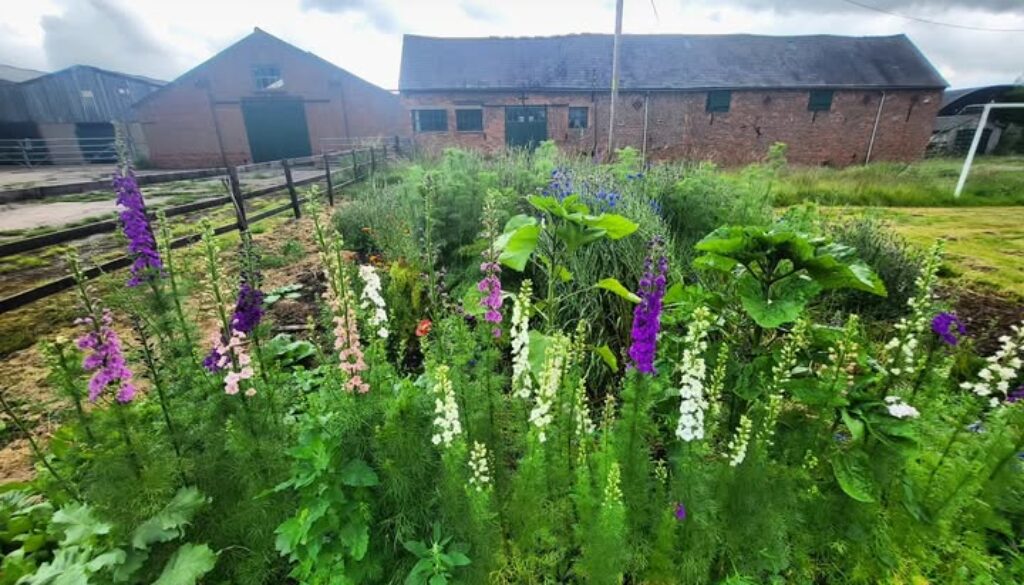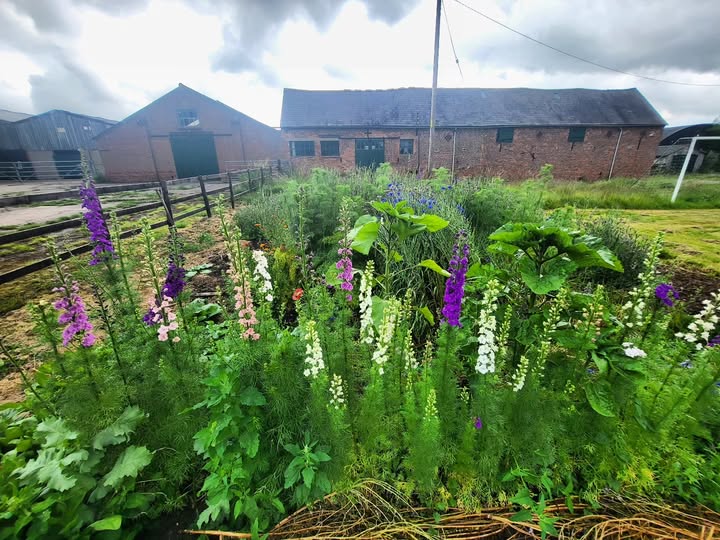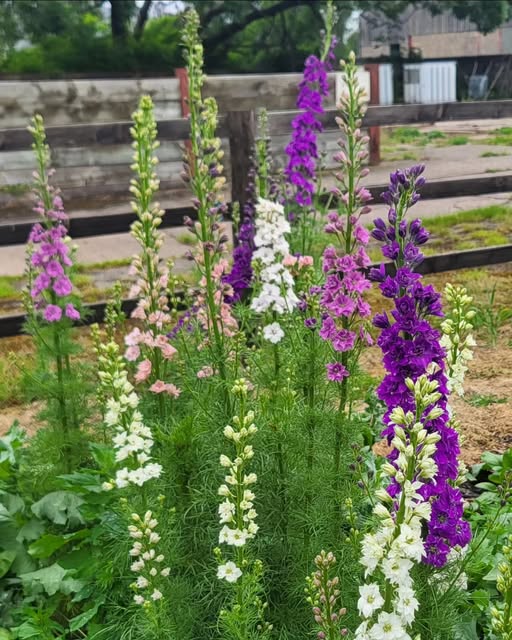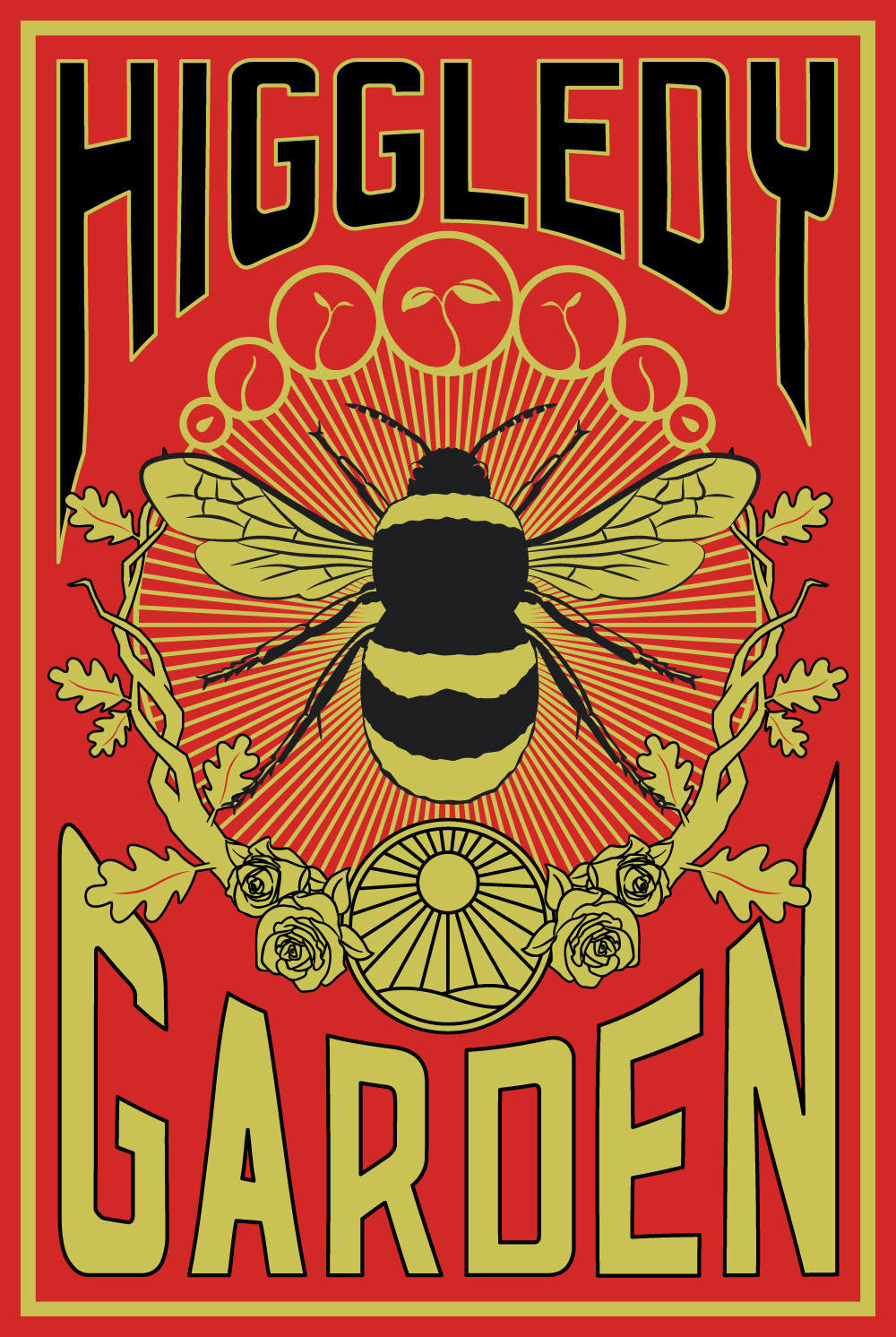Growing Larkspur from seed. A Higgledy ramble.


The Larkspur Ramble
I’ve always thought that annual Larkspur is the quiet cousin of the Delphinium. Where Delphiniums are prone to flopping over in the border like a tipsy uncle at a wedding, Larkspur tends to stand with rather more self-respect. Not that they’re completely drama-free – no, no. They’ve got their little ways. But catch them in the right mood, and they’ll reward you with tall spires of cool, papery flowers in pinks, blues, whites, and the kind of moody mauve that looks like it belongs in an Edwardian mourning bouquet.
A Bit of a Misnomer
Let’s clear something up before we get muddy. When we talk about annual Larkspur, we’re generally talking about Consolida ajacis – not to be confused with the perennial Delphinium elatum, although the two are related and do bear a family resemblance. Think of them as the Ramones to Delphinium’s Rolling Stones. A bit more punk, a bit less polish, and more inclined to self-seed behind your back.
Larkspur is one of those old-fashioned flowers that looks like it’s always been in the garden, whether it has or not. You’ll find it in faded cottage garden prints, embroidered into samplers, and pressed between the pages of 1920s diaries, its colour dulled but its shape still recognisable – spurred petals like a bird’s beak, hence the name. ‘Lark’s spur’. Obvious once someone points it out.
Growing Tips From a Recovering Over-Waterer
Now, growing Larkspur isn’t tricky, but it does help to know a few things up front. The first is that they’re not keen on being moved once they’ve started. Like old dogs and certain uncles, they don’t like a lot of fuss. So it’s best to sow them where you want them to flower.
Sowing can be done either in the autumn – late September or early October – or in early spring. I’m a big fan of the autumn sowing for all the usual reasons: stronger plants, earlier flowers, and the general smugness of having something already underway when everything else is cold and dormant. But spring works too, especially if your garden’s wet over winter and prone to slugs.
Here’s the trick – and it really is a trick, as in slightly magical. Larkspur seeds need a period of cold to get going. In seed-world parlance, this is “vernalisation”. In real-world terms, it means chuck the seeds in the fridge for a week or two before sowing, or sow them outside when it’s still a bit nippy. They seem to like being a little shocked into life. I sympathise.
Sow them thinly in rows or scattered in drifts, about a quarter of an inch deep. If you’re sowing in pots or modules, which I occasionally do when I’m feeling reckless, handle them gently when planting out – their roots don’t enjoy disturbance. Water sparingly. Too much, and they rot. Too little, and they sulk. The Goldilocks principle applies here, as it so often does in gardening.
As they grow, you’ll get slender plants with finely cut foliage that looks a bit like carrot tops. Not the most glamorous start, but be patient. By early summer, you’ll be rewarded with spires two to three feet tall, peppered with those classic larkspur blooms. Some will be double, some single. I rather like the singles – they feel more honest.
Varieties Worth a Gander
I grow a few reliable favourites every year. ‘Giant Imperial’ is an old-school mix that gives you the full pastel spread – dreamy blues and pinks, plus the occasional startling white. ‘Earl Grey’ is one for the romantics: dusty purple with smoky overtones, like the remnants of a Victorian love letter. And ‘Sublime Azure’ does exactly what it says on the tin – tall, slender spikes of celestial blue. The sort of blue that painters dream of and printers never quite get right. Larks ‘Hyacinth’ is another fav of mine which we stock in the Higgledy seed shop of dreams.

Larkspur in History and Folklore
Now then, let’s step back in time a little.
The ancient Greeks knew Larkspur, or something very like it, and associated it with Ajax, the tragic hero of the Trojan War – hence the Latin name ajacis. Legend has it that when Ajax died, larkspur flowers sprang from the ground where his blood was spilled. Cheerful stuff, as usual with the Greeks.
In medieval times, it was often bundled into garlands or used as a talisman. One belief held that larkspur could ward off scorpions and snakes – not terribly relevant to the average British gardener, unless your compost heap is unusually lively. American settlers brought the plant westward and used it to dye textiles – a sort of rough, homemade indigo. You can still find instructions for this if you poke around online, though I suspect the results vary wildly.
In the language of flowers, larkspur traditionally symbolises an open heart and strong bonds of love. Each colour has its own nuance: pink for fickleness (not sure how romantic that is), white for happiness, and blue for grace. Imagine receiving a posy of blue larkspur on a summer’s morning. You’d have to go and write a poem about it, wouldn’t you?
Curious Facts to Impress Your Auntie
Here’s a small grab-bag of Larkspur trivia:
-
All parts of the plant are poisonous if ingested – especially to livestock – so it’s not one for the goat paddock. That said, it’s perfectly safe to grow and admire as long as no one’s eating it. Same goes for foxgloves, aconite, and most of the interesting ones.
-
The dried flowers keep their colour remarkably well. Hang them upside down in a dark, dry place and they’ll reward you with preserved petals that still look lovely come winter.
-
It’s a top draw for pollinators – especially bumblebees, who seem to enjoy navigating the spurred flowers like tiny puzzle boxes.
-
You’ll sometimes find larkspur used as a natural insect deterrent in organic sprays. I’ve never tried this myself – I prefer to let the hoverflies do their thing – but it’s nice to know your flowers have secret powers.
Final Thoughts From the Flower Bed
Every year I make room for Larkspur, even if the space is tight. There’s something gently defiant about their upright stems, their cool palette in the summer heat. They’re not showy, not needy, not eager to be everyone’s favourite. But give them a chance, and they’ll stake their quiet claim on your heart.
And when you brush past them on a June morning – maybe on your way to fetch a watering can or chase a chicken – they’ll rustle softly and release that faint, slightly spicy scent that smells, to me at least, like the ghost of summer long past.
Grow them. You won’t regret it.
Regards
Higgers and Flash
